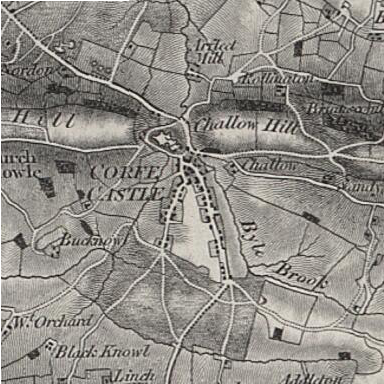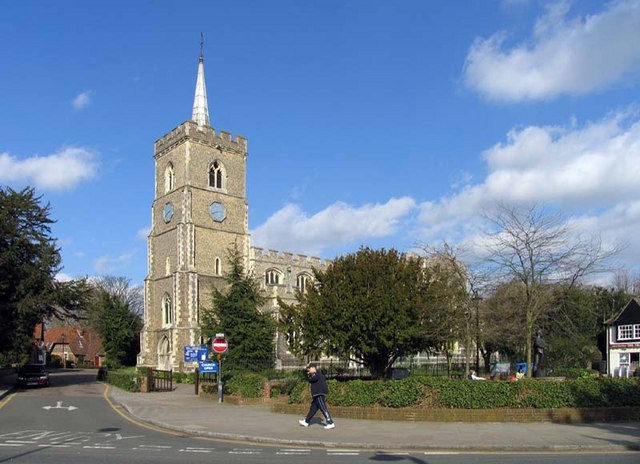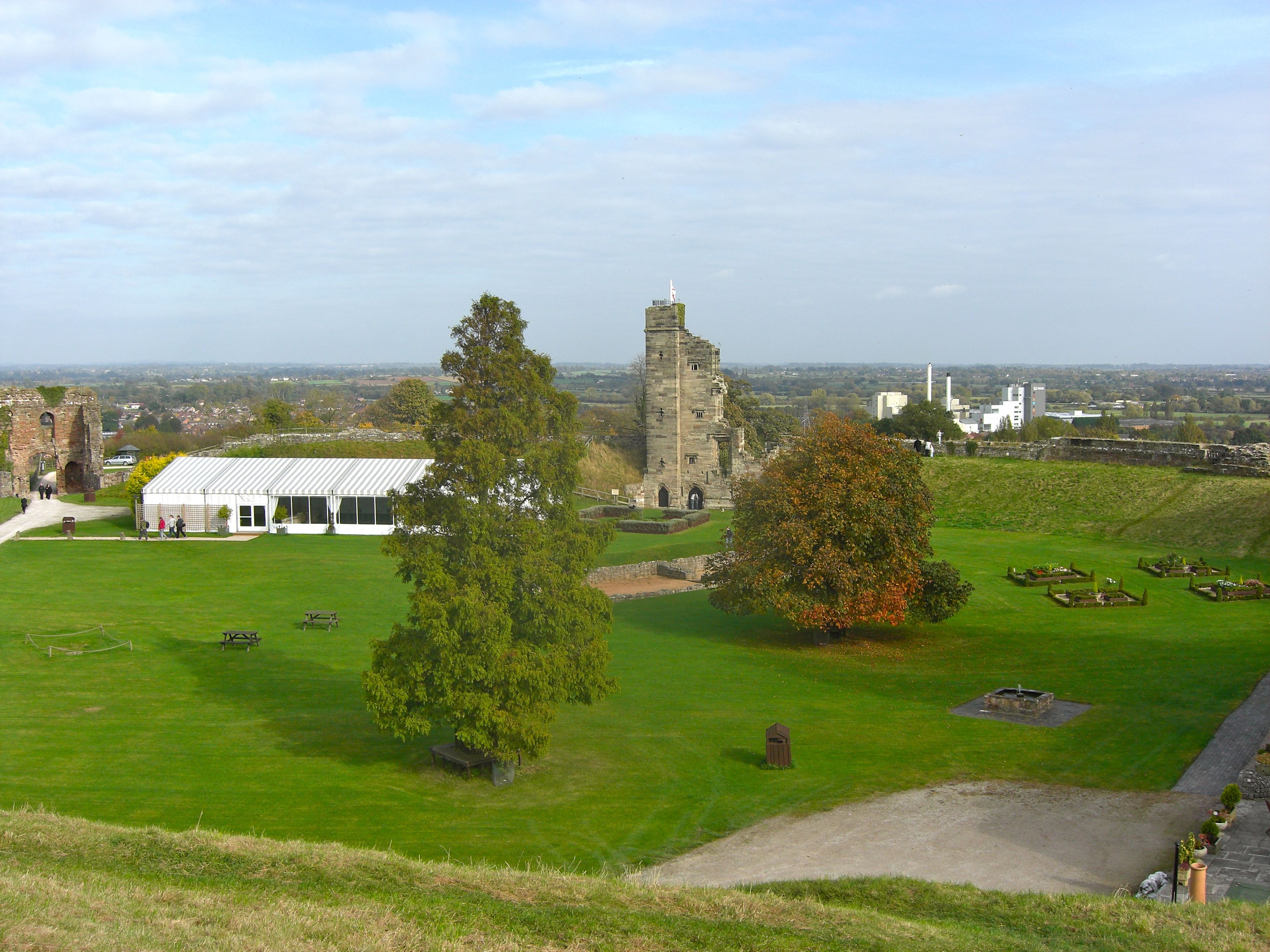|
Roger D'Amory
Roger Damory, Lord d'Amory, Baron d'Amory in Ireland, (d. bef. 14 March 1321/1322) was a nobleman and Constable of Corfe Castle. He was the younger son of Sir Robert D'Amory, Knight, of Bucknell and Woodperry, Oxfordshire. Sir Roger also possessed in his own right the manors of Bletchington and Holton, Oxfordshire, Standon in Hertfordshire, Caythorpe in Lincolnshire, and Knaresborough and St. Briavels' Castles. He fought at the Battle of Bannockburn where he provided "good services", following which he was granted the manors of Sandal, Yorkshire and Vauxhall, Surrey, in 1317. He was summoned to parliament on 20 November 1317, and in the 11th (1318), 12th (1319), 13th (1320) and 14th (1321) years of the reign of King Edward II, whereby he is held to have become Lord d'Amory. He had been a favourite of King Edward II of England until he was displaced by Hugh Despenser the Younger. D'Amory took an active part in the Despenser War in 1321–1322 and was one of the pri ... [...More Info...] [...Related Items...] OR: [Wikipedia] [Google] [Baidu] |
Corfe Castle
Corfe Castle is a fortification standing above the village of the same name on the Isle of Purbeck peninsula in the English county of Dorset. Built by William the Conqueror, the castle dates to the 11th century and commands a gap in the Purbeck Hills on the route between Wareham and Swanage. The first phase was one of the earliest castles in England to be built at least partly using stone when the majority were built with earth and timber. Corfe Castle underwent major structural changes in the 12th and 13th centuries. In 1572, Corfe Castle left the Crown's control when Elizabeth I sold it to Sir Christopher Hatton. Sir John Bankes bought the castle in 1635, and was the owner during the English Civil War. While Bankes was fighting in London and Oxford, his wife, Lady Mary Bankes, led the defence of the castle when it was twice besieged by Parliamentarian forces. The first siege, in 1643, was unsuccessful, but by 1645 Corfe was one of the last remaining royalist ... [...More Info...] [...Related Items...] OR: [Wikipedia] [Google] [Baidu] |
Despenser War
The Despenser War (1321–22) was a baronial revolt against Edward II of England led by the Marcher Lords Roger Mortimer and Humphrey de Bohun. The rebellion was fuelled by opposition to Hugh Despenser the Younger, the royal favourite.Some historians use the label the "Despenser War" to refer to just the second phase of the conflict; others apply it to the entire conflict. Others prefer the term the "Despenser Wars". The Welsh part of the campaign is occasionally termed the "Glamorgan war". After the rebels' summer campaign of 1321, Edward was able to take advantage of a temporary peace to rally more support and a successful winter campaign in southern Wales, culminating in royal victory at the Battle of Boroughbridge in the north of England in March 1322. Edward's response to victory was his increasingly harsh rule until his fall from power in 1326. Causes of the war The initial success of the rebels reflected the power of the Marcher Lords. Since Edward I's conquest of Wales, ... [...More Info...] [...Related Items...] OR: [Wikipedia] [Google] [Baidu] |
Baltimore
Baltimore ( , locally: or ) is the most populous city in the U.S. state of Maryland, fourth most populous city in the Mid-Atlantic, and the 30th most populous city in the United States with a population of 585,708 in 2020. Baltimore was designated an independent city by the Constitution of Maryland in 1851, and today is the most populous independent city in the United States. As of 2021, the population of the Baltimore metropolitan area was estimated to be 2,838,327, making it the 20th largest metropolitan area in the country. Baltimore is located about north northeast of Washington, D.C., making it a principal city in the Washington–Baltimore combined statistical area (CSA), the third-largest CSA in the nation, with a 2021 estimated population of 9,946,526. Prior to European colonization, the Baltimore region was used as hunting grounds by the Susquehannock Native Americans, who were primarily settled further northwest than where the city was later built. Colonist ... [...More Info...] [...Related Items...] OR: [Wikipedia] [Google] [Baidu] |
Keeper Of The Rolls
''Custos rotulorum'' (; plural: ''custodes rotulorum''; Latin for "keeper of the rolls", ) is a civic post that is recognised in the United Kingdom (except Scotland) and in Jamaica. England, Wales and Northern Ireland The ''custos rotulorum'' is the keeper of an English, Welsh and Northern Irish county's records and, by virtue of that office, the highest civil officer in the county. The position is now largely ceremonial. The appointment lay with the Lord Chancellor until 1545, but is now exercised by the Crown, under the Royal sign-manual, and is usually held by a person of rank. The appointment has been united with that of the lord-lieutenancy of the county throughout England since 1836. The ''custos rotulorum'' of Lancashire was formerly appointed by the Chancellor of the Duchy of Lancaster, and that of County Durham vested in the Bishop of Durham until the abolition of its palatine rights. Traditionally, he was one of the justices of the peace. The custos rotulorum of the Is ... [...More Info...] [...Related Items...] OR: [Wikipedia] [Google] [Baidu] |
John Lodge (archivist)
John Lodge (1692–1774) was an English archivist and historian, best known for his work ''The Peerage of Ireland'', a complete genealogical history of Irish peers. Life Lodge was born into a farming family in Bolton-le-Sands, Lancashire, as the son of a husbandman-farmer, Edmund Lodge. He was educated at a school in Clapham, Yorkshire, under Mr. Ashe, and was admitted sub-sizar of St John's College, Cambridge on 26 June 1716. He graduated B.A. in 1719; was ordained a deacon at Lincoln in 1720 and as a priest at Ely in 1721; then became a schoolteacher at March, Cambridgeshire in 1725, and was awarded his M.A. in 1730. He went on to settle in Abbey Street, Dublin. In 1744, he published a ''Report of the Trial in Ejectment of Campbell Craig'', from his own shorthand notes. In 1751 he was appointed deputy-keeper of the records in Bermingham Tower of Dublin Castle; in 1759 he became deputy-clerk and keeper of the rolls, and was subsequently deputy-registrar of the court of prerogat ... [...More Info...] [...Related Items...] OR: [Wikipedia] [Google] [Baidu] |
William 4th Lord Bardolf
William Bardolf, 4th Baron Bardolf and 3rd Baron Damory (21 October 1349 – 29 January 1386) of Wormegay, Norfolk, was an extensive landowner in Norfolk, Lincolnshire, Suffolk and Surrey. He was the son of John Bardolf, 3rd Baron Bardolf and Elizabeth Damory, suo jure 2nd Baroness Damory.Douglas Richardson. ''Plantagenet Ancestry: A Study in Colonial And Medieval Families,'' Genealogical Publishing, 2005. p. 608''Google eBook''/ref> His maternal grandparents were Sir Roger Damory, Lord Damory and Lady Elizabeth de Clare, a granddaughter of King Edward I. In 1372, Bardolf had livery of his lands from the Crown - See (https://www.british-history.ac.uk/inquis-post-mortem/vol13/pp104-115#highlight-first). He was summoned to parliament from 20 January 1376 to 3 September 1385, as "William Bardolf of Wormegay". He served in the French and Irish wars, latterly under John of Gaunt, Duke of Lancaster. Family He married Agnes (d. 12 June 1403), daughter of Sir Michael de Poynings, 1 ... [...More Info...] [...Related Items...] OR: [Wikipedia] [Google] [Baidu] |
John Bardolf, 3rd Lord Bardolf
John Bardolf, 3rd Baron Bardolf, Knight Banneret, (of Wormegay, Norfolk; 13 January 1314 – 29 July 1363), was a baron in the Peerage of England. He was the son of Thomas Bardolf, 2nd Baron Bardolf and Agnes Grandison, thought to be the daughter of William de Grandison, 1st Baron Grandison.Douglas Richardson. ''Plantagenet Ancestry: A Study in Colonial And Medieval Families,'' Genealogical Publishing, 2005. pg 608''Google eBook''/ref> John Bardolf was in his minority when his father died in 1331 and in 1336, upon proof of his age being given, he did homage and was awarded livery of his lands which in addition to Wormegay included the lands and manors of Cantley, & Caistor, Norfolk, Owmby, Lincolnshire, and Addington, Surrey. He was summoned to parliament from 22 January 1336, to 1 June 1363 by Writs directed to ''Johanni Bardolf de Wirmegey''. This nobleman participated in the glories of the martial reign of King Edward III, notably in Scotland, Brittany, and even Germany, and ... [...More Info...] [...Related Items...] OR: [Wikipedia] [Google] [Baidu] |
Elizabeth De Clare
Elizabeth de Clare, 11th Lady of Clare (16 September 1295 – 4 November 1360) was the heiress to the lordships of Clare, Suffolk, in England and Usk in Wales. She was the youngest of the three daughters of Gilbert de Clare, 6th Earl of Hertford and Joan of Acre, and sister of Gilbert de Clare, 7th Earl of Hertford, Gilbert de Clare, who later succeeded as the 7th Earl.Nicolas, N. H. (2012). Testamenta vetusta: being illustrations from wills, of manners, customs, &c. as well as of the descents and possessions of many distinguished families. From the reign of Henry the Second to the accession of Queen Elizabeth (Vol. 2). Nichols & son. . She is often referred to as Elizabeth de Burgh (; ), due to her first marriage to John de Burgh (1286–1313), John de Burgh. Her two successive husbands were Theobald de Verdun, 2nd Baron Verdun, Theobald II de Verdun (of the Butler-de Verdun family) and Roger d'Amory. Marriages Elizabeth de Clare married three times and had three children; one b ... [...More Info...] [...Related Items...] OR: [Wikipedia] [Google] [Baidu] |
Ware, Hertfordshire
Ware is a town in Hertfordshire, England close to the county town of Hertford. It is also a civil parishes in England, civil parish in East Hertfordshire district. Location The town lies on the north–south A10 road (Great Britain), A10 road which is partly shared with the east–west A414 road, A414 (for Hertford to the west and Harlow to the east). There is a large Kingsmead Viaduct, viaduct over the River Lee (England), River Lea at Kings Meads. The £3.6m two-mile bypass opened on 17 January 1979. At the north end of the bypass is the Wodson Park Sports and Leisure Centre and Hanbury Manor, a hotel and country club. The former route of the A10 through the town is now the A1170. The Ware railway station, railway station is on the Hertford East Branch Line and operated by Greater Anglia (train operating company), Greater Anglia and is on a short single track section of the otherwise double track line. History Archaeology has shown that Ware has been occupied since at least t ... [...More Info...] [...Related Items...] OR: [Wikipedia] [Google] [Baidu] |
Staffordshire
Staffordshire (; postal abbreviation Staffs.) is a landlocked county in the West Midlands region of England. It borders Cheshire to the northwest, Derbyshire and Leicestershire to the east, Warwickshire to the southeast, the West Midlands County and Worcestershire to the south and Shropshire to the west. The largest settlement in Staffordshire is Stoke-on-Trent, which is administered as an independent unitary authority, separately from the rest of the county. Lichfield is a cathedral city. Other major settlements include Stafford, Burton upon Trent, Cannock, Newcastle-under-Lyme, Rugeley, Leek, and Tamworth. Other towns include Stone, Cheadle, Uttoxeter, Hednesford, Brewood, Burntwood/Chasetown, Kidsgrove, Eccleshall, Biddulph and the large villages of Penkridge, Wombourne, Perton, Kinver, Codsall, Tutbury, Alrewas, Barton-under-Needwood, Shenstone, Featherstone, Essington, Stretton and Abbots Bromley. Cannock Chase AONB is within the county as well as parts of the ... [...More Info...] [...Related Items...] OR: [Wikipedia] [Google] [Baidu] |
Tutbury Castle
Tutbury Castle is a largely ruined medieval castle at Tutbury, Staffordshire, England, in the ownership of the Duchy of Lancaster and hence currently of King Charles III. It is a Scheduled Ancient Monument. People who have stayed in the castle include Eleanor of Aquitaine and Mary, Queen of Scots, who was a prisoner there. History Norman origins Tutbury Castle became the headquarters of Henry de Ferrers and was the centre of the wapentake of Appletree, which included Duffield Frith. With his wife Bertha, he endowed Tutbury Priory with two manors in about 1080. It would seem that Tutbury at that time was a dependency of the Norman abbey of St Pierre‑sur‑Dives. Medieval era William de Ferrers, 3rd Earl of Derby joined a rebellion against Henry II in 1173–74 and Tutbury Castle was one of at least twenty castles belonging to the rebels that were slighted. The castle was "nearly destroyed" by Prince Edward in 1264 after the rebellion of Robert de Ferrers, 6th Earl of Derby ... [...More Info...] [...Related Items...] OR: [Wikipedia] [Google] [Baidu] |
Battle Of Burton Bridge (1322)
The 1322 Battle of Burton Bridge was fought between Thomas, 2nd Earl of Lancaster and his cousin King Edward II of England during the Despenser War. Edward's army was proceeding northwards to engage Lancaster, having defeated his Marcher Lord allies in Wales. Lancaster fortified the bridge at Burton upon Trent, an important crossing of the River Trent, in an attempt to prevent the King from proceeding. Edward arrived at nearby Cauldwell on 7 March 1322 and intended to use the ford at Walton-on-Trent to cross the river and outflank Lancaster. Edward was delayed for three days by floodwaters, during which time some of his force was deployed opposite Lancaster's men at the bridge. On 10 March 1322 Edward's main force crossed the river at Walton and proceeded to the south side of Burton. Lancaster moved his men outside the town, intending to face the King in open battle, but withdrew northwards when he saw that he was heavily outnumbered. Lancaster was pursued closely by the ... [...More Info...] [...Related Items...] OR: [Wikipedia] [Google] [Baidu] |

.jpg)


